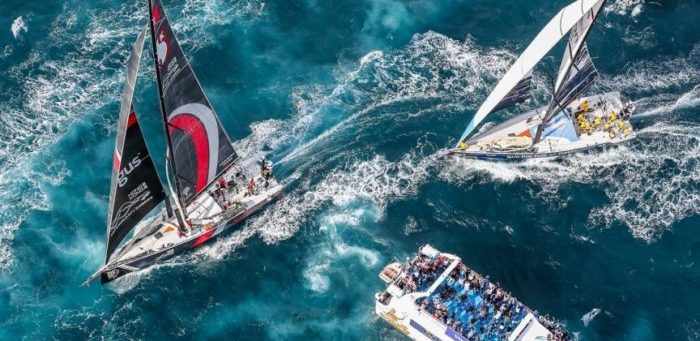Following the collision between Vestas 11th Hour Racing and a non-racing vessel in the final stages of the racing leg in Hong Kong waters, the organisers of the Volvo Ocean Race have commissioned an independent report into ocean racing at night in areas of high vessel traffic density, to establish what steps race organisers may take to mitigate risk going forward.
The collision occurred between the boat Vestas 11th Hour Racing and a fishing vessel, on 20 January 2018, around 30 miles from the Leg 4 finish line in Hong Kong, resulting in death of one fisherman. He had been recovered from the water and taken on board Vestas 11th Hour Racing and was transferred by helicopter to a hospital in Hong Kong where medical staff were unable to revive him.
The report, to be issued by June 2018, will be conducted by an Independent Report Team (IRT), chaired by Rear Admiral Chris Oxenbould AO RAN (Rtd) and assisted by Stan Honey and Chuck Hawley.
The IRT will examine all the issues associated with racing a Volvo Ocean 65, or similar racing boat, at night in areas of high vessel traffic density, drawing on the experiences in recent editions of the Volvo Ocean Race.
[smlsubform prepend=”GET THE SAFETY4SEA IN YOUR INBOX!” showname=false emailtxt=”” emailholder=”Enter your email address” showsubmit=true submittxt=”Submit” jsthanks=false thankyou=”Thank you for subscribing to our mailing list”]
Phil Lawrence, Race Director, stated:
Understandably, there has been a lot of reaction to this incident in the sailing community, but the fact is, it takes time to make a responsible assessment of what could be done differently to minimise risk and increase safety. Our sailors, as qualified professionals, understand their responsibilities under the International Regulations for Preventing Collisions at Sea, Racing Rules of Sailing and the Rules of the Volvo Ocean Race. As race organisers, we will continue to evaluate safety as we race over the coming months and take the appropriate steps to minimise risk.

































































